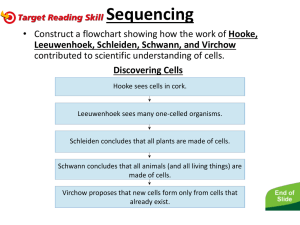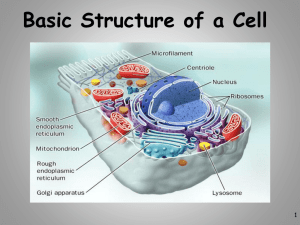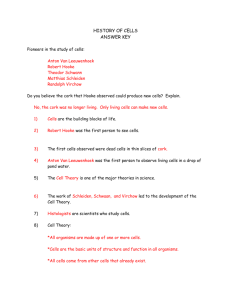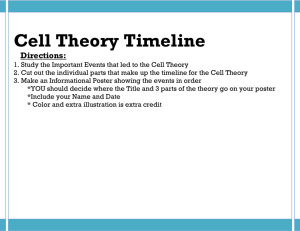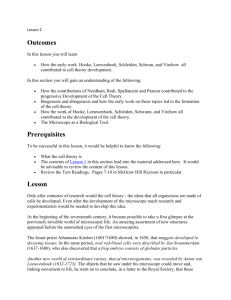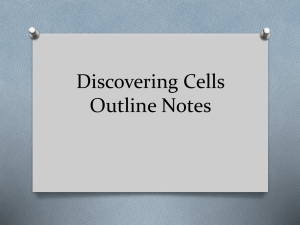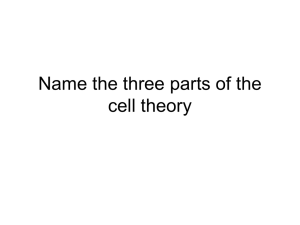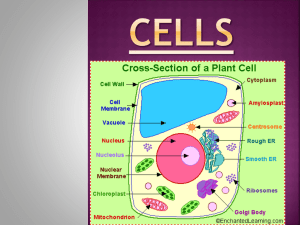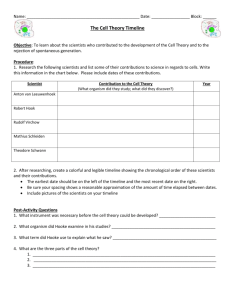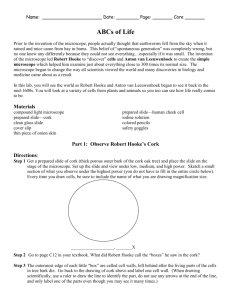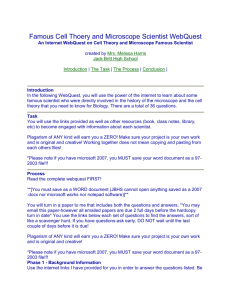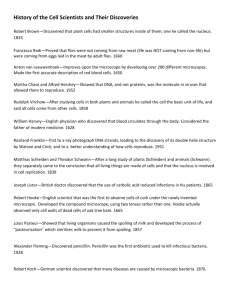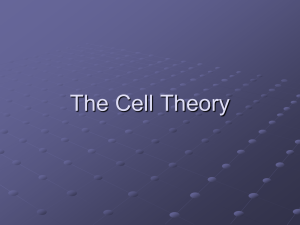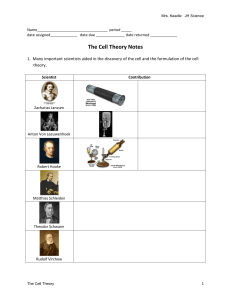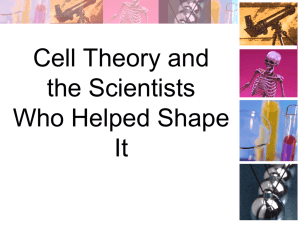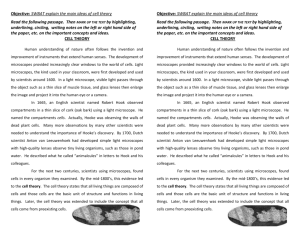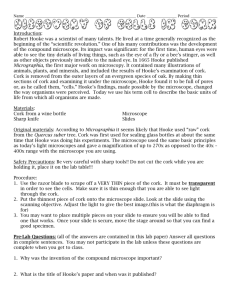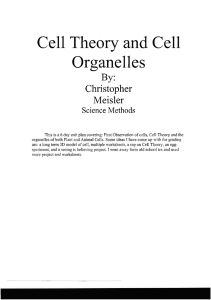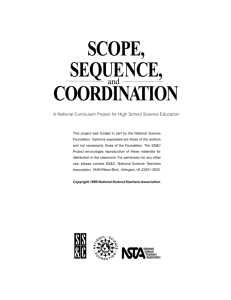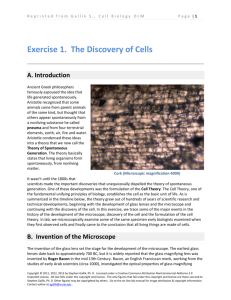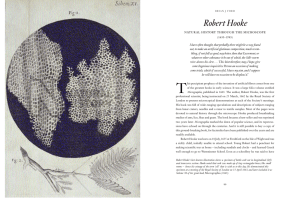Discovering Cells:
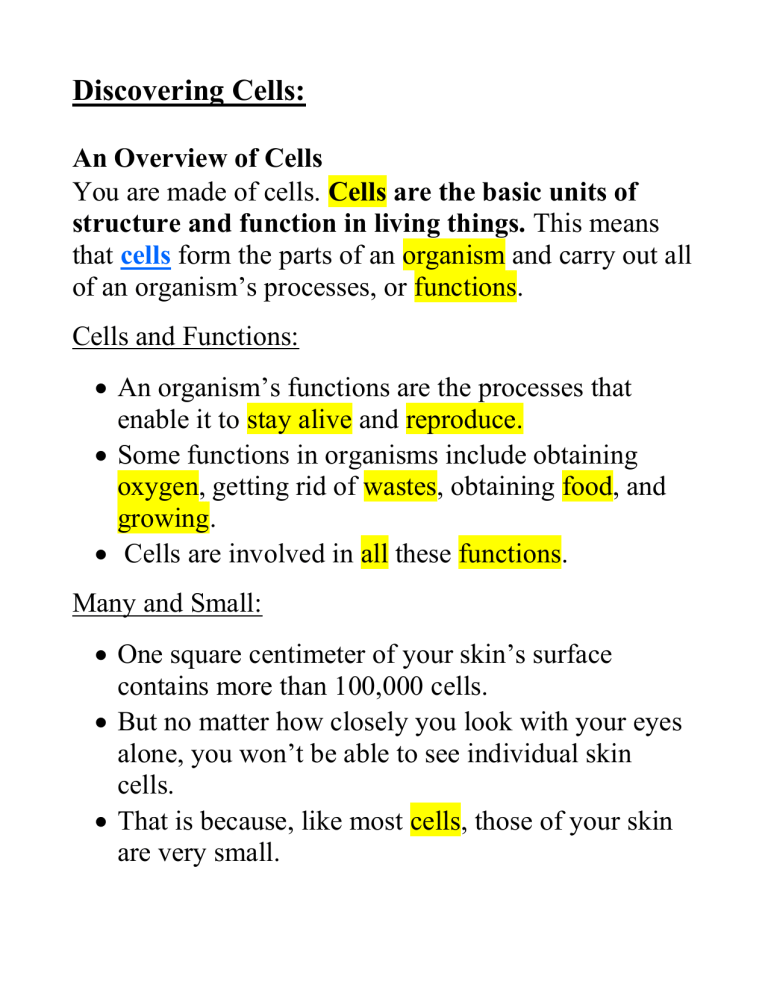
Discovering Cells:
An Overview of Cells
You are made of cells.
Cells are the basic units of structure and function in living things.
This means that cells form the parts of an organism and carry out all of an organism’s processes, or functions.
Cells and Functions:
An organism’s functions are the processes that enable it to stay alive and reproduce.
Some functions in organisms include obtaining oxygen, getting rid of wastes, obtaining food, and growing.
Cells are involved in all these functions.
Many and Small:
One square centimeter of your skin’s surface contains more than 100,000 cells.
But no matter how closely you look with your eyes alone, you won’t be able to see individual skin cells.
That is because, like most cells, those of your skin are very small.
Until the late 1600s, no one knew cells existed because there was no way to see them.
First Observation of Cells
Around 1590, the invention of the microscope enabled people to look at very small objects.
The invention of the microscope made it possible for people to discover and learn about cells.
A microscope is an instrument that makes small objects look larger.
Some microscopes do this by using lenses to focus light.
The lenses used in light microscopes are similar to the clear, curved pieces of glass or plastic used in eyeglasses.
Robert Hooke:
One of the first people to observe cells was the
English scientist and inventor Robert Hooke.
Hooke built his own compound microscope, which was one of the best microscopes of his time.
In 1663, Hooke used his microscope to observe the structure of a thin slice of cork.
Cork, the bark of the cork oak tree, is made up of cells that are no longer alive.
To Hooke, the empty spaces in the cork looked like tiny rectangular rooms.
Therefore, Hooke called the empty spaces cells, which is a word meaning “small rooms.”
Anton van Leeuwenhoek:
At about the same time that Robert Hooke made his discovery, Anton van Leeuwenhoek also began to observe tiny objects with microscopes.
Leeuwenhoek looked at drops of lake water, scrapings from teeth and gums, and water from rain gutters.
In many materials, Leeuwenhoek was surprised to find a variety of one-celled organisms.
Leeuwenhoek noted that many of these tiny organisms moved.
Development of the Cell Theory
Schleiden, Schwann, and Virchow:
Three German scientists made especially important contributions to people’s knowledge about cells.
These scientists were Matthias Schleiden, Theodor
Schwann, and Rudolf Virchow.
In 1838, Schleiden concluded that all plants are made of cells. He based this conclusion on his own research and on the research of others before him.
The next year, Theodor Schwann concluded that all animals are also made up of cells. Thus, stated, all living things are made up of cells.
Schleiden and Schwann had made an important discovery about living things. However, they didn’t explain where cells came from.
Until their time, most people thought that living things could come from nonliving matter.
In 1855, Virchow proposed that new cells are formed only from cells that already exist. “All cells come from cells,” wrote Virchow.
What the Cell Theory Says:
Schleiden, Schwann, Virchow, and others helped develop the cell theory. The cell theory is a widely accepted explanation of the relationship between cells and living things. The cell theory states the following:
- All living things are composed of cells.
- Cells are the basic units of structure and function in living things.
- All cells are produced from other cells.
The cell theory holds true for all living things, no matter how big or how small.
Since cells are common to all living things, they can provide information about the functions that living things perform.
Because all cells come from other cells, scientists can study cells to learn about growth and reproduction.
Review Questions:
1.
Explain this statement: “Cells are the basic units of structure and function in organisms.”
Cells from the parts of an organism and carry out all of its functions.
2.
In what important function are the cells in your eyes involved in?
Sight
3.
What does a microscope enable people to do?
Make it possible for people to discover and learn about tiny things, such as cells.
4.
Why would Hooke’s discovery been impossible without a microscope?
The human eye is not able to see such small structures.
5.
What are the main ideas of the Cell Theory?
1. All living things are composed of cells.
2. Cells are the basic units of structure and function in living things.
3. All cells are produced from other cells.

